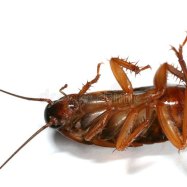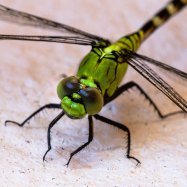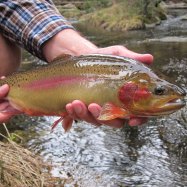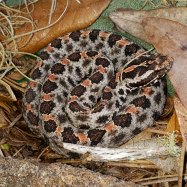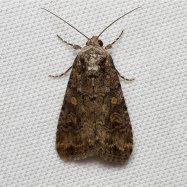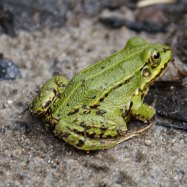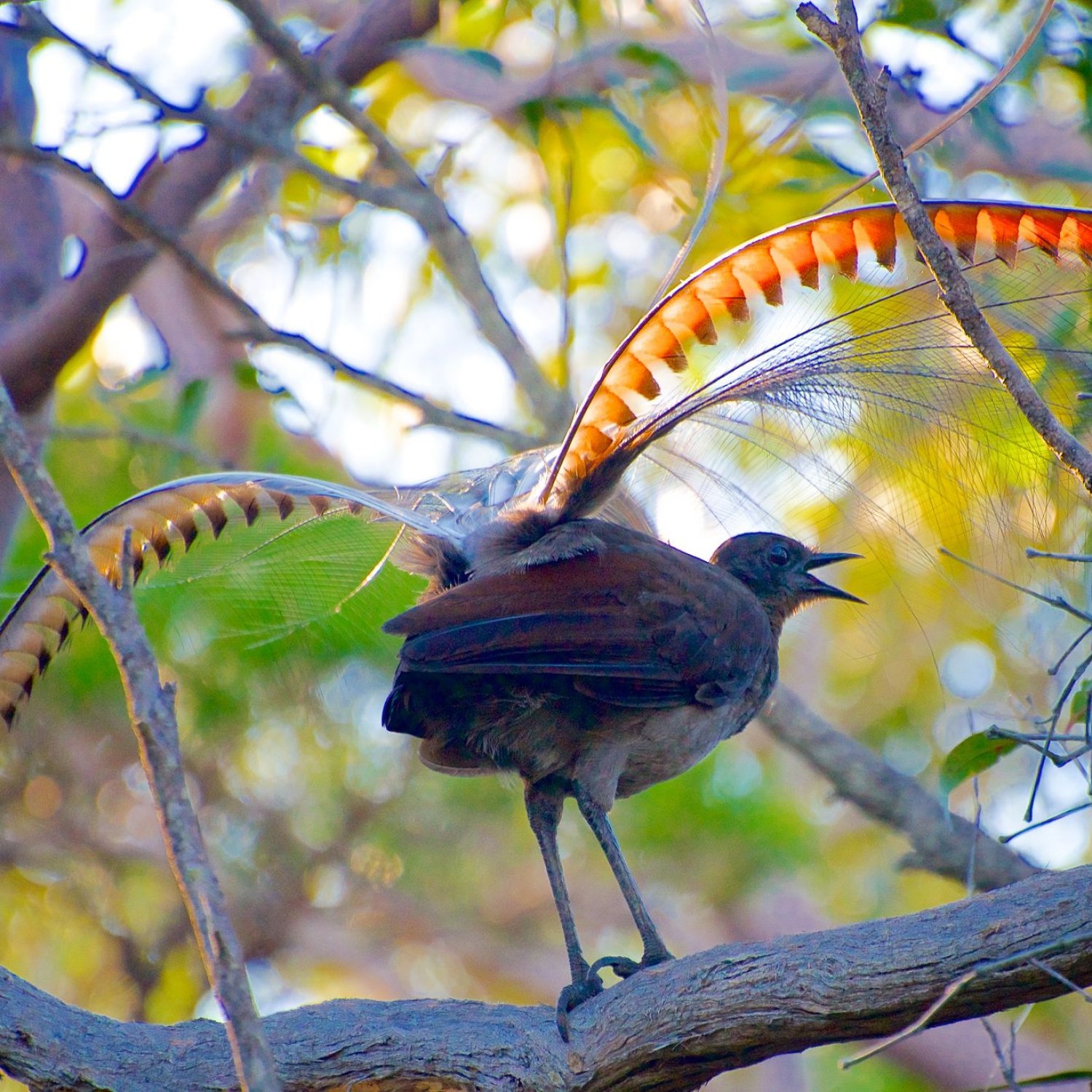
Lyrebird
80-100 cm (31-39 in)
Meet the Lyrebird, a fascinating creature that can mimic the sounds of over 20 different species of birds and other sounds found in its native Eastern Australia. With a length of 80-100 cm and medium-sized body, this bird's most notable feature is its long tail feathers and powerful legs. The Lyrebird belongs to the Menuridae family and is a must-see for bird enthusiasts and nature lovers alike. Discover this incredible animal for yourself on your next trip to Australia!
Animal Details Summary:
Common Name: Lyrebird
Kingdom: Animalia
Habitat: Rainforests, eucalyptus forests, and shrublands
The Fascinating World of the Lyrebird: A True Master of Mimicry
The rainforests of eastern Australia are teeming with a variety of fascinating species, but one bird in particular stands out for its incredible abilities – the Lyrebird. Scientifically known as Menura novaehollandiae, these birds have earned the nickname of "The Master Mimic" due to their remarkable ability to mimic a wide range of sounds, including human voices and other animal calls.But what is it about these birds that makes them such skilled mimics? Let's dive deeper into the world of the Lyrebird and explore its unique characteristics, behavior, and habitat.
The Anatomy of a Lyrebird
Lyrebirds belong to the Animalia kingdom, Chordata phylum, and Aves class Lyrebird. They are part of the Passeriformes order, which includes over half of all bird species, and the Menuridae family, known for their distinct vocal abilities. They are medium-sized birds, measuring between 80-100 cm (31-39 in) in length, with a predominantly brown coloration and rufous undertail coverts.
One of the most striking features of the Lyrebird is its long tail feathers, which resemble a lyre, a stringed instrument from ancient Greece. These feathers are used by males during mating rituals, where they display elaborate dances and mimic a range of sounds to impress potential mates.
In addition to their long tails, Lyrebirds have strong legs and feet that enable them to forage on the ground and dig for food. They also have a short, rounded beak, which they use to catch and eat insects, spiders, worms, and other small invertebrates.
A Habitat Fit for Mimicry
Lyrebirds are native to the eastern regions of Australia, where they primarily inhabit rainforests, eucalyptus forests, and shrublands. These habitats provide a perfect environment for the Lyrebird's unique abilities, as well as a diverse range of food sources.In their natural habitats, Lyrebirds are known to be shy and elusive creatures, often hiding in dense thickets or under the cover of fallen leaves Loggerhead Shrike. They are also predominantly solitary birds, only coming together during the breeding season.
A Menu of Omnivorous Delights
One of the secrets behind the Lyrebird's incredible vocal abilities may be its omnivorous diet. These birds have a diverse palate, feeding on a variety of foods including insects, fruits, seeds, and even small reptiles and mammals.Their diet plays a crucial role in developing their vocal abilities, as they need a strong and flexible throat to produce a wide range of sounds.
The Fantastic Mimicry of the Lyrebird
Now, let's dive into the remarkable mimicry skills of the Lyrebird, which have captivated humans for centuries. These birds are known to mimic a wide range of sounds, including other bird calls, car alarms, and even human voices.But how do they do it? It all starts with their unique vocal organ, which is made up of two syringeal muscles that can produce complex sounds. These muscles are also larger in males, allowing them to mimic a wider range of sounds during their courtship displays.
However, the Lyrebird's vocal abilities are not solely limited to mimicry. They also use a variety of sounds to communicate with each other, including a repertoire of whistles, clicks, and growls.
The Evolution of Mimicry in Lyrebirds
The Lyrebird's ability to mimic has long fascinated scientists and naturalists, leading to numerous studies and theories about its evolution. One popular hypothesis is that mimicry in Lyrebirds evolved as a way to attract mates and establish dominance during the breeding season.Another theory suggests that their mimicry skills may have evolved as a form of predator avoidance, as they mimic the sounds of potential predators to deter them from approaching.
While the exact reason behind the Lyrebird's mimicry remains a mystery, one thing is for sure – it is an impressive feat of evolution that continues to captivate us.
The Lyrebird in Culture and Conservation
The Lyrebird's unique abilities have also earned them a place in popular culture and art. They have been featured in songs, books, and movies, and even on Australian stamps.However, despite their cultural significance, Lyrebirds face numerous threats in the wild. Due to habitat loss and fragmentation, they are listed as vulnerable on the IUCN Red List of Threatened Species. Steps are being taken to protect their habitats, and they are also commonly found in protected areas such as national parks.
In Conclusion
In the world of birds, few species can match the remarkable abilities of the Lyrebird. From their stunning mimicry skills to their fascinating anatomy and behavior, these birds continue to surprise and intrigue us.So, next time you find yourself in the rainforests of eastern Australia, keep an ear out for the unique calls of the Lyrebird. And who knows, you might even catch a glimpse of these shy and elusive birds displaying their magnificent skills.

Lyrebird
Animal Details Lyrebird - Scientific Name: Menura novaehollandiae
- Category: Animals L
- Scientific Name: Menura novaehollandiae
- Common Name: Lyrebird
- Kingdom: Animalia
- Phylum: Chordata
- Class: Aves
- Order: Passeriformes
- Family: Menuridae
- Habitat: Rainforests, eucalyptus forests, and shrublands
- Feeding Method: Omnivorous
- Geographical Distribution: Eastern Australia
- Country of Origin: Australia
- Location: Eastern Australia
- Animal Coloration: Predominantly brown with rufous undertail coverts
- Body Shape: Medium-sized bird with long tail feathers and strong legs
- Length: 80-100 cm (31-39 in)
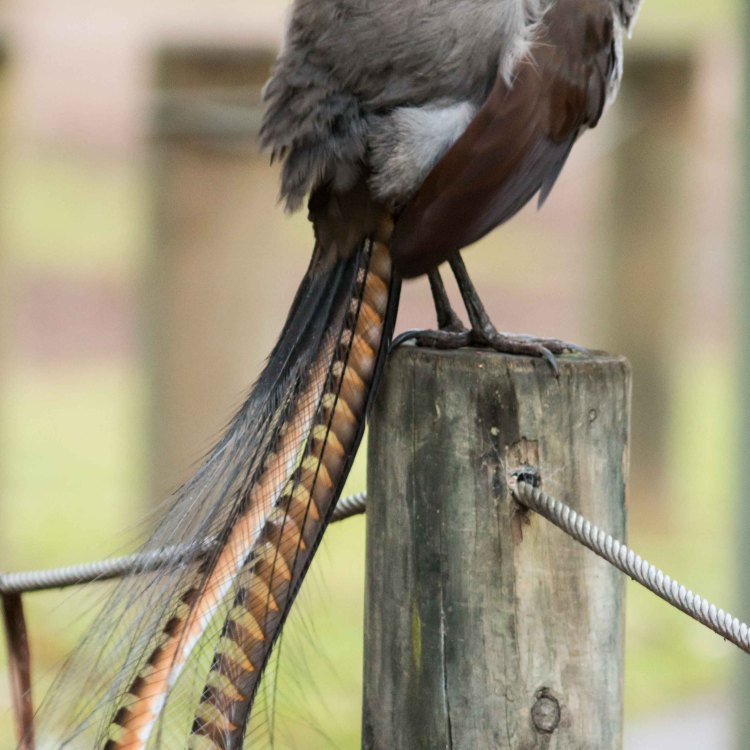
Lyrebird
- Adult Size: Medium
- Average Lifespan: Up to 20 years
- Reproduction: Sexual
- Reproductive Behavior: Monogamous
- Sound or Call: Mimics sounds of other birds and animals
- Migration Pattern: Non-migratory
- Social Groups: Solitary or in small groups
- Behavior: Shy and secretive
- Threats: Habitat loss, illegal hunting, predation by foxes and feral cats
- Conservation Status: Least Concern
- Impact on Ecosystem: Important seed dispersers
- Human Use: Tourism, bird-watching
- Distinctive Features: Elaborate tail plumage and ability to mimic sounds
- Interesting Facts: Male Lyrebirds are known for their elaborate courtship displays and ability to mimic a wide variety of sounds, including the calls of other birds and even human-made sounds like car alarms and camera shutters.
- Predator: Foxes, feral cats
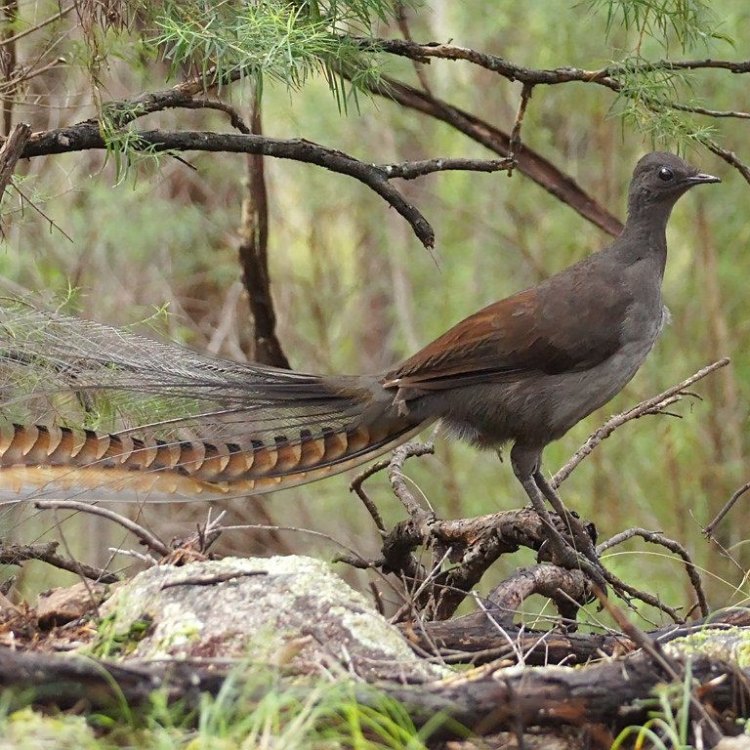
Menura novaehollandiae
The Fascinating Lyrebird: Mimicking Masters of the Avian World
The Australian lyrebird is a truly unique and remarkable species, known for both its stunning appearance and incredible vocal abilities. Found throughout the forests of eastern Australia, these medium-sized birds have captured the imaginations of bird-watchers, conservationists, and nature enthusiasts around the world. In this article, we will take a closer look at the fascinating world of the Lyrebird, from its appearance and behavior to its impact on the ecosystem and human use.The Lyrebird's Physical Characteristics
The lyrebird, also known by its scientific name Menura superba, is a medium-sized bird, measuring around 80cm in length and weighing between 1 and 2 kilograms PeaceOfAnimals.Com. They are sexually dimorphic, with males being larger than females and having more elaborate tail feathers.One of the most striking features of the male lyrebird is its impressive tail plumage, which gives the bird its name. It consists of two long, ribbon-like feathers that curve outward and resemble the shape of a lyre, a stringed instrument used in ancient Greek music. This tail display is used during courtship displays and is a key factor in attracting a mate.
The female lyrebird, on the other hand, has a much plainer appearance, with brownish feathers and a smaller, less elaborate tail. They use their camouflaged appearance to blend into their surroundings and protect them from predators.
The Life of a Lyrebird
Lyrebirds are known for their longevity, with an average lifespan of up to 20 years in the wild. They reach sexual maturity at around 2-3 years of age and are known to be monogamous. This means that they will mate with only one partner for the duration of their breeding season, which takes place from August to December Leech.During this time, male lyrebirds put on an impressive courtship display to attract females. They will clear a patch of ground in the forest, known as a "midden," and decorate it with moss and foliage. They then use their elaborate tail feathers to create a canopy over the midden and begin their courtship dance, accompanied by their mesmerizing vocalizations.
Masters of Mimicry
The lyrebird is most famous for its ability to mimic sounds, earning it the nickname "master mimics" of the avian world. Male lyrebirds have a specialized syrinx, the vocal organ of birds, which enables them to produce a wide range of sounds. They can mimic not only the calls of other birds but also a variety of other sounds, including the sound of other animals, car alarms, and even human-made sounds, like camera shutters.This talent is not just for entertainment purposes; it also serves a functional purpose. The male lyrebirds use their mimicking abilities to defend their territory, attract mates, and warn other birds of potential predators. In fact, researchers have recorded lyrebirds mimicking the sounds of foxes and feral cats to scare away other animals and protect their nesting grounds.
Behavior of the Shy and Secretive
Despite their impressive vocal abilities and striking appearance, lyrebirds are known to be shy and secretive birds. They prefer to spend most of their time foraging for food on the forest floor, using their strong claws and beaks to dig through leaf litter and soil in search of insects, worms, and other small invertebrates.Being solitary creatures, lyrebirds are usually only seen in pairs during mating season and may form small groups of up to five individuals outside of the breeding season. They are also known to be territorial and will defend their feeding and nesting grounds from intruders.
The Lyrebird's Role in the Ecosystem
As important members of their ecosystem, lyrebirds play a crucial role in seed dispersal. They feed on a wide variety of forest fruits, and as they move around, they spread these seeds to new areas, helping to maintain healthy and diverse forests.They are also important prey for their natural predators, such as foxes and feral cats. However, due to their elusive nature, they are not easy targets for these predators.
Threats and Conservation Status
Like many other species around the world, lyrebirds face various threats to their survival. One of the biggest threats is habitat loss, as their natural forest habitat is continuously being cleared for agriculture and urbanization. This disrupts their foraging and nesting grounds, making it difficult for them to find food and suitable mates.Another major threat to lyrebirds is illegal hunting, primarily for their striking feathers and calls, which are often used to make crafts and sold as souvenirs. This illegal trade poses a severe threat to their population, as it disrupts their breeding and can lead to a decline in numbers.
Additionally, lyrebirds are also vulnerable to predators like foxes and feral cats, which are introduced species that are not native to Australia. These predators have no natural predators, making them a significant threat to the lyrebird population.
Despite these threats, the IUCN (International Union for Conservation of Nature) classifies lyrebirds as "Least Concern" on the Red List of Threatened Species. This means that they are not currently at risk of extinction, and their population is stable. However, continued conservation efforts are crucial to ensure their survival for future generations.
The Human Connection
Lyrebirds have captured the hearts and minds of people around the world, drawing in nature enthusiasts, researchers, and tourists to witness their incredible vocal abilities and elaborate courtship displays.Bird-watching is a popular activity among tourists in Australia, and the opportunity to spot a lyrebird in its natural habitat is a significant draw. While they are elusive birds, visitors may have a better chance of sighting a lyrebird in national parks and protected areas such as the Dandenong Ranges National Park and the Border Ranges National Park.
Their unique abilities have also been a source of inspiration for artists and musicians, with their mimicking abilities being featured in movies and songs.
Final Thoughts
The Australian Lyrebird is a truly unique and remarkable species, with its stunning appearance, impressive vocal abilities, and important role in the ecosystem. Despite facing several threats, they continue to thrive in their natural habitat, captivating all who have the privilege of witnessing their performances. As we continue to prioritize their conservation, we can ensure that these master mimics of the avian world will continue to enchant us for many years to come.
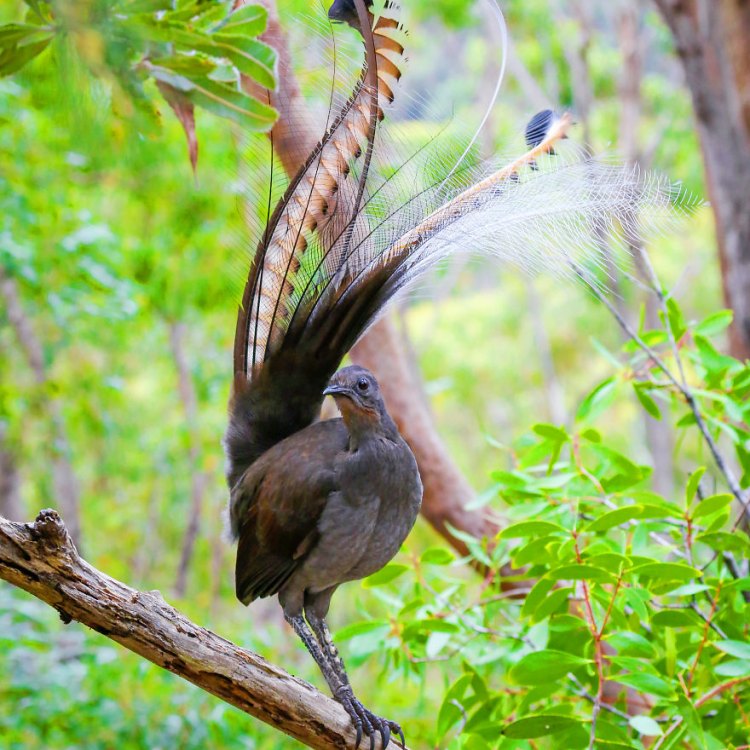
The Fascinating World of the Lyrebird: A True Master of Mimicry
Disclaimer: The content provided is for informational purposes only. We cannot guarantee the accuracy of the information on this page 100%. All information provided here may change without prior notice.


